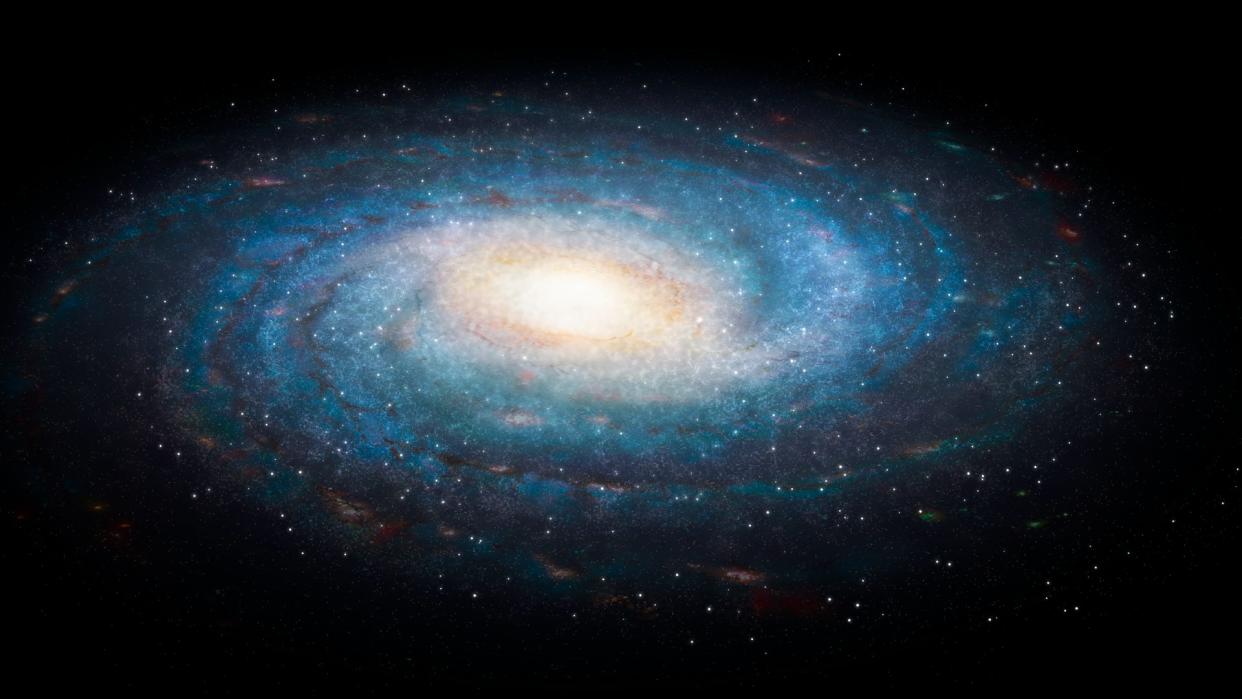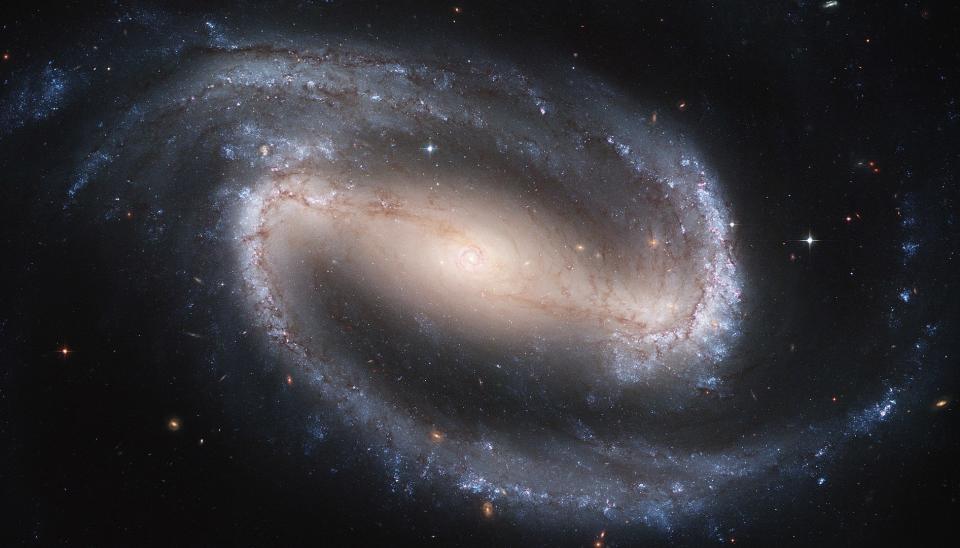The Milky Way galaxy may be a different shape than we thought

New measurements suggest that the Milky Way galaxy may have a different shape than we thought.
Over the past few years, astronomers have increasingly discovered that galaxies seem to come in three main shapes: Elliptical, irregular and spiral. The majority of known galaxies that fit in this last category seem to have two prominent "arms" that branch out and split into lesser arms.
But the traditional portrayal of the Milky Way is that of a galaxy with four major spiral arms extending out from a thick centralized bulge of stars. This makes our spiral galaxy stand out as an extremely rare outlier with an odd shape that must have some very unique properties to grant it four major arms.
That portrayal could be wrong, however. A team of astronomers has published new research that suggests we have been wrong about the shape of the Milky Way for decades, with our galaxy instead having two main arms just like its contemporary spiral galaxies.
Related: Milky Way galaxy: Everything you need to know about our cosmic neighborhood
The revelation that could reshape our understanding of the Milky Way came about when space scientists with the Chinese Academy of Sciences based at the Purple Mountain and National Astronomical Observatories analyzed multiple sources of astronomical data to get a better understanding of our galaxy's true shape.
"In spite of much work, the overall spiral structure morphology of the Milky Way remains somewhat uncertain," the astronomers wrote in a paper describing their research and conclusions. "In the last two decades, accurate distance measurements have provided us with an opportunity to solve this issue."
The team assessed data from a new generation of space instruments that can better measure the distance to individual stars which allowed them to measure the distances to around 200 stars and start putting together a map of the Milky Way. They then added data from the European Space Agency (ESA)'s Gaia space telescope which precisely observes the movement of stars and their location in relation to Earth.
In particular, the astronomers honed in on hot and massive stars called OB stars in the Gaia data. Because these stars are short-lived they move very little during their main-sequence hydrogen-burning lifetime which makes them useful for mapping purposes. Data collected from 24,000 OB stars was added to the map as were Gaia observations of over 1,000 open galactic clusters.
This led the astronomers to suggest that the Milky Way is a barred spiral galaxy with just two main arms extending from this dense central bar.

"Using the precise locations of very young objects, for the first time, we propose that our galaxy has a multiple-arm morphology that consists of two-arm symmetry," they wrote. "The Norma and Perseus Arms are likely the two symmetric arms in the inner Milky Way. As they extend from the inner galaxy to the outer parts, they bifurcate, and connect to the Centaurus and Sagittarius Arms, respectively."
RELATED STORIES:
— What Does the Milky Way Galaxy Look Like?
— How many stars are in the Milky Way?
— Our Milky Way galaxy isn't very well mixed, study suggests
At the outskirts of the Milky Way, the astronomers write, are distant and fragmented irregular arms that are not connected to the central bulge of the galaxy where the majority of its stars are located. The fragmentation of spiral arms may have been caused by our galaxy colliding with other galaxies or even galactic clusters in its ancient history.
The team of astronomers concluded that this new model of the Milky Way's shape could provide an alternative basis for future studies of galactic structure. They add that more details should be revealed by further observations of nearby radio sources taken by multiple telescopes that would allow their distances from Earth to be calculated, and by improved data from the Gaia spacecraft. Gaia launched in 2013 and is expected to observe the universe for at least another two years until 2025.
The team's research is published in the Astrophysical Journal.
